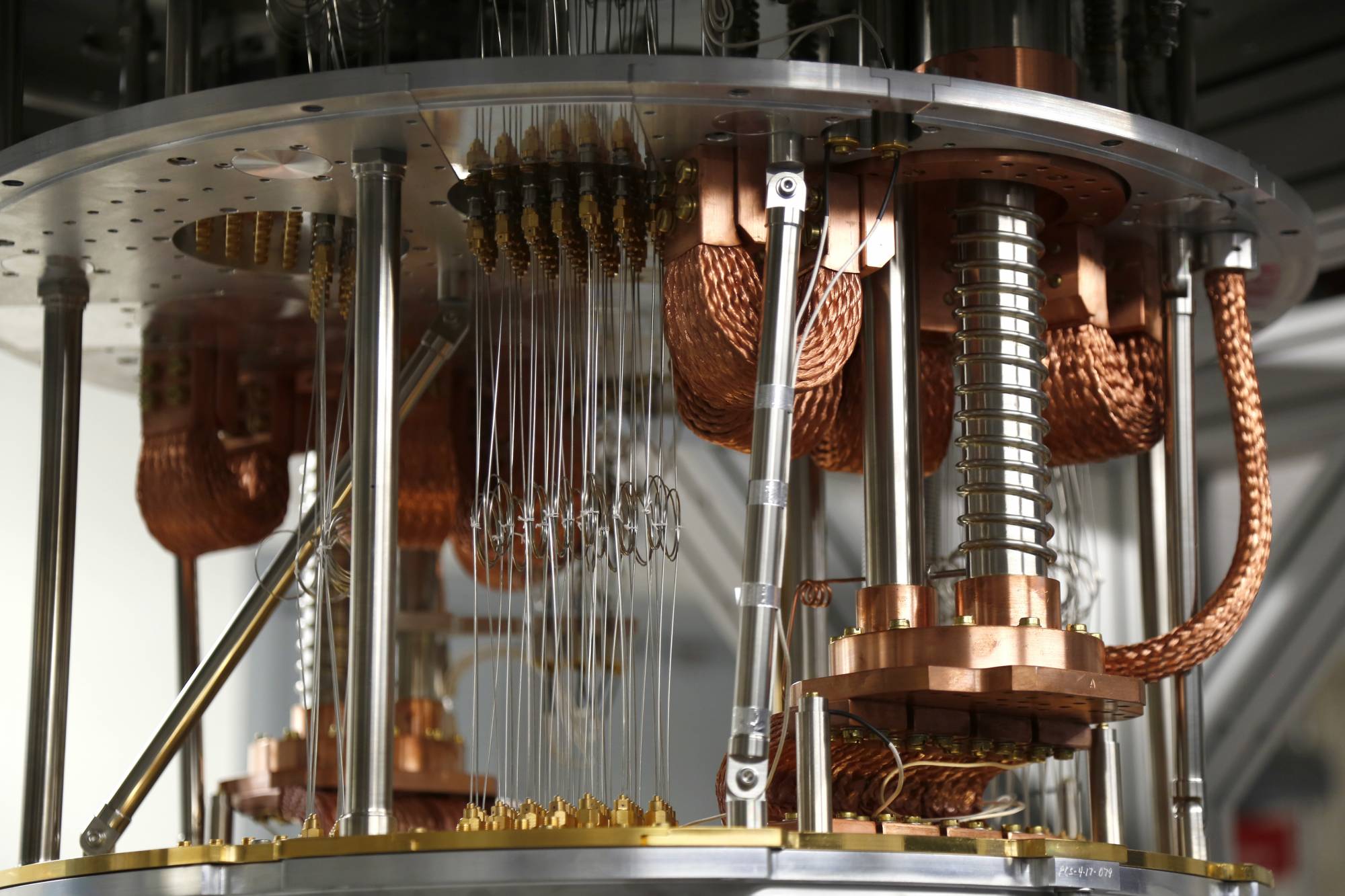On the human capital front, quantum computing is easier said than done
The Defense Department ranks high among federal agencies seeking expertise in quantum computing, the next big thing in computing. DoD agencies have established ...
The Defense Department ranks high among federal agencies seeking expertise in quantum computing, the next big thing in computing. DoD agencies have established several ways to recruit and hire people with chops in quantum sub-skills. But the Government Accountability Office (GAO) finds, they’re not all following the best practices for getting the people they need. For more, the Federal Drive with Tom Temin spoke to Candice Wright, the GAO’s Director of Science, Technology Assessment and Analytics .
Interview Transcript:
Tom Temin And I guess that’s an enduring issue. And this is the latest manifestation of the idea of human capital management and getting those bodies in for quantum. Give us the big picture here on this particular report.
Candice Wright Indeed. Well, as you know, the U.S. government certainly faces challenges meeting its science and technology workforce needs. This has been something that’s been widely reported, and quantum science is one of those areas. It’s a nascent and evolving area. It requires highly specialized skill sets that are not widely available, but yet in high demand. We certainly find that quantum technology development is critical to national security and maintaining DOD’s military advantage, especially in areas such as cryptography, computing and sensing. So it’s really imperative that the department develop its workforce to remain competitive in this field.
Tom Temin And what are some of those particular fields they need people in?
Candice Wright Well, this area is certainly one that’s multidisciplinary and it can draw on several disciplines like physics, engineering, computer science and math, to name a few. One of the things that we encountered as we were charged with examining the department’s quantum workforce planning and workforce development efforts, is that defining? The quantum workforce is really challenging. There isn’t an existing occupational series again because of the multidisciplinary nature of this area. And so given that it’s new and emerging are nascent and emerging, you know, it’s unclear what direction the field will go and more importantly, what the mix of professions will be. And so in light of this, we had our work cut out for us to identify the quantum workforce at DOD. So instead of defining the workforce using an existing occupational series, what we ended up doing was reporting on personnel who are assigned to projects in the four defense labs in our scope. And so that was the Air Force, Army and Naval research laboratories, as well as Naval Information Warfare Center Pacific. And doing this work, we found that DOD could tell us that there were about 255 staff who were working all or part of their time on quantum sensing, computing and communications projects. Most of these staff have PhDs, and they were either physicists or engineers, and some of them were actually specialists in chemistry, computer science and math. We did find overall that the labs that were in our scope were generally following leading practices for strategic workforce planning, meaning that they had identified the critical skills and competencies they had developed workforce planning strategies and set up administrative and other infrastructure to be able to make progress in this area.
Tom Temin So what were you looking at here? Sounds like everything is in place. They’ve got the people and the ways to get them in.
Candice Wright Indeed, they certainly had these plans in place. But one of the things that we really saw was that there was a need for them to have mechanisms in place to monitor their progress against these plans and to make sure that they had a way to evaluate if they were making progress. And so with that in mind, we did make four recommendations to the to the labs to address the gaps that we identified. Again, because we think that while it’s important to have the plans in place, you want to make sure that you have a way to assess progress. We want to make sure that you are engaging the right leadership and organizational partners as you execute the plan so that you can make adjustments as needed along the way.
Tom Temin We’re speaking with Candice Wright. She’s director of science, technology assessment and analytics at the Government Accountability Office. And these practices then apply for, I guess, any kind of specialized work that the department might be doing as a way of just making sure that all workforces are correct and that you’re planning for them and your assessment of them are all in place. Fair to say.
Candice Wright Indeed, these practices are not unique to quantum workforce needs and really apply as you think about workforce planning across the federal government. But they are really important in these emerging areas, especially when there are very highly specialized skill sets and that maybe are not widely available. And DoD might be competing with other federal agencies for these skills, but then also private sector entities as well. And so having plans in place that allow them to adopt these practices will better ensure that the department can identify the skills that are needed to acquire the skills and talent that are necessary for them to build and maintain their U.S. global leadership in quantum technologies.
Tom Temin Yeah, the hiring and recruiting has to be not so ad hoc, but according to a plan. And then you monitor are the requirements being matched with the people we’ve got here.
Candice Wright Planning is essential. As the old adage goes, failing to plan is a plan to fail. But it’s also important to make sure that you’re monitoring progress against those plans.
Tom Temin All right. So your recommendations, you had them for the Army, the Navy, another one for the Navy. Another one for the Navy. And. Not so much for the Air Force, but what are you recommending here?
Candice Wright So we’re really recommending that they implement mechanisms to be able to monitor and evaluate the progress. I’ll note that the department did concur with the recommendations. And again, I want to make clear that we did find that they were generally following these practices. These are other elements that we think that they could improve upon to make sure that they have, you know, the most robust and effective process in place.
Tom Temin Because there is no, as you pointed out, job series that is described has the name quantum computing on it. But yet there are quantum programs and program executive offices and programs covering quantum by name in the military. That’s kind of a little irony there.
Candice Wright Indeed. And I think part of the challenge is because it is such a new area and evolving area, there’s still a need to understand, you know, what are the skill sets that are really needed and how do you then determine the skill sets that align with that with the needs of the department? And this is a case certainly across the board for many emerging areas. So with that in mind, you know, it’s at least important for the department to identify the competencies and skill sets which it has done, and we think that that’s certainly a good step in the right direction.
Tom Temin It seems like there’s an opportunity here, and this might not have been part of the report, but other agencies in the civilian side, energy and so on, are pursuing expertise in quantum and trying to understand what the implications are for when quantum actually becomes something practical. Could be decades. It might be never, but it could be, you know, in a few years. You just never know that there could be some government wide collaboration on what do we need here for our quantum chops in the future.
Candice Wright Yes. And so I like two things. You know, we last year issued a technology assessment on quantum computing and communications. And one of the things that came out in the course of that work was really the need for the US to build its quantum workforce. That can be done through existing programs, through job training programs or educational programs, but it might also require creating new ones to be able to meet the needs and expand the workforce. We certainly have also seen that there is legislation activity in this area. There was the National Quantum Initiative Act in 2018 that also highlighted the need to invest in quantum workforce development. That act is actually up for reauthorization this year and there’s have been a House bill that’s been introduced this month or excuse me, last month in November, and that also included some provisions to focus on strengthening quantum workforce, but also STEM (Science, Technology, Engineering, and Mathematics) development programs.
Tom Temin And one thing we do know is that quantum computing doesn’t look in any way, shape or form, whether it’s the programing for or the hardware, doesn’t even look like computers. Some of the quantum machines that are out there now look like a contraption that’s nothing like a standard computer. So it really is a unique skill set, even if it yet needs to be further defined.
Candice Wright Definitely. And I think agencies are wrestling with that issue as well. I did want to mention, though, Tom, some of the STEM programs that DoD has in place, because that was another part of the work was for us to survey the department to identify STEM education programs that exist and can be a means to grow the pipeline to meet the department’s needs. So in this portion of the work, we identified that DoD had 41 different STEM programs. There were about at least 400 students and post-doctoral researchers who had participated in these programs in order to gain work experience at the defense laboratories. Two programs that I’ll highlight, which we talk about in the work are the Army and NSA Quantum Computing, Graduate Research Fellowship. And this is a fellowship program that supports students and postdocs working on quantum information processing and quantum sensing projects. There’s actually another program called the Science, Mathematics and Research Transformation Program, and of course the acronym for that is Smart Offer students full tuition stipends, internships and even guaranteed employment if they pursue STEM degrees in areas like physics, engineering and computer science. So for your listeners who are going to be with family over the holidays, wanted to just, you know, be a good public servant here and mention some of these opportunities that they can then share with family members.
Copyright © 2024 Federal News Network. All rights reserved. This website is not intended for users located within the European Economic Area.
Tom Temin is host of the Federal Drive and has been providing insight on federal technology and management issues for more than 30 years.
Follow @tteminWFED





